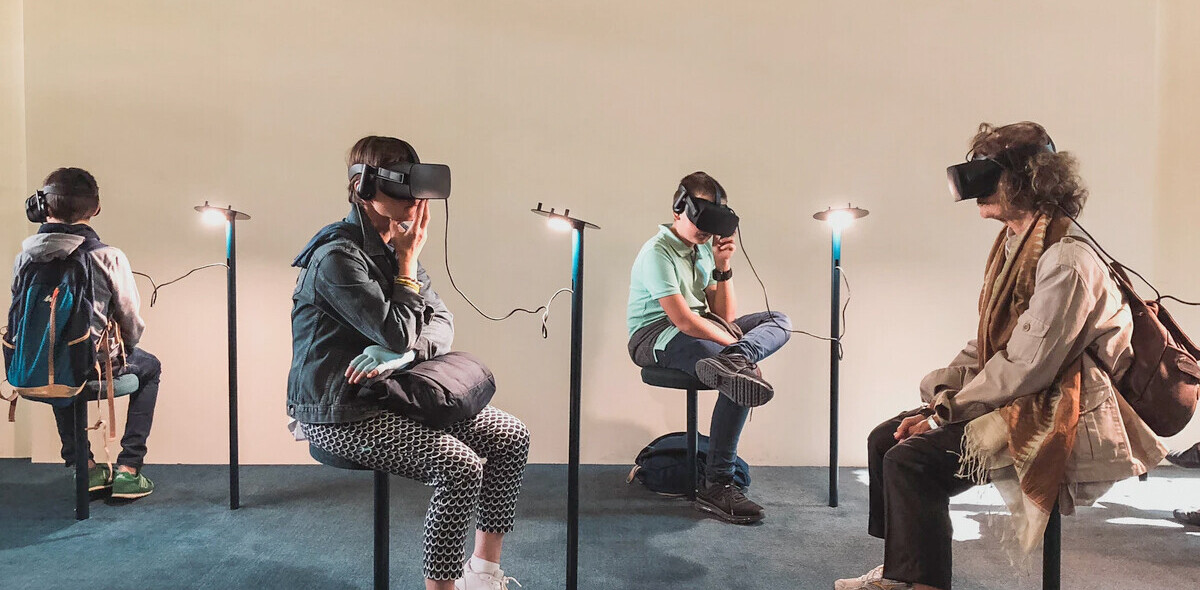
Developers can be a finicky tribe when approached by companies. They can be particularly allergic to the presence of recruiters. So events designed as hackathons are literally one of those blissful ‘hacks’ to networking with the developer community that consistently pays off.
Hackathons are also fruitful in what they are designed to do: get the creative and problem-solving juices of the industry’s top tech wizards flowing so that they can innovate and create cool things under the looming shadow of a winding down clock.
“Creators love to develop with the newest tech and toys out there.” Hassan Karaouni, partnerships lead at Stanford’s virtual reality club, Rabbit Hole VR, told me.
Everything my team did felt like we were pioneering a new medium.
If they’re designed and positioned right, hackathons can also be brought into play whenever specific problems need to be cracked.
In the case of the VR and AR industry, their problem is that they’re stuck in a hype cycle limbo. Most people working in or close to the industry know, especially the sober ones, that the whole thing is resting on incredibly shaky sand that is shifting several times each day. Literally.
Hackathons can be a big driving force to changing that, but a lot depends on how they’re organized.
Enter Damon Hernandez and Mike Aratow who together started a chain reaction of VR Hackathon that began in San Francisco back in 2014 and have since spread organically throughout Europe and Asia.
Hernandez emphasizes principles like space design as critical to keeping things free from becoming rigid and the event feeling too much like a competition. For example, one open space is preferable to an area that is sectioned off, creating “fiefdoms” as Hernandez jokingly calls them.
“We usually cap at 200 participants,” Hernandez told me.
We don’t want people getting lost in the crowd.

He’s all about encouraging flow and making things feel natural, especially in terms of the dynamics between participants and how they form and operate as teams. He chuckled when I speculated that he had trained in the art of Feng Shui.
Sponsors are sometimes necessary, sometimes not, but in the case of hackathons oriented to VR and AR, they play a crucial role, particularly when running events at scale.
VR Hackathon’s partner event is a case in point. Coined Reality, Virtually, Hackathon!, the event is sponsored and hosted by the MIT Media Lab this October. The organizers are looking to crowd up the 6th floor with 400 participants, which is in fact the venue’s capacity limit.
“We want to fill up MIT!” the lead organizer, Steven Max Patterson, told me.
The first day is dedicated to prepping the participants with workshops on the latest hardware, software and design know-how required to produce practical applications in VR and AR. This wouldn’t be possible without sponsors like MIT, Microsoft, Samsung Global Innovation Center, and Unity stepping into the fore.
Most hackathons don’t need prep, but VR and AR are so new that it’s necessary.
I don’t envy the judges, particularly since evaluating prototypes built-in VR or AR can take up to three times longer than those of the more evergreen variety. But the content they’ll be judging should be interesting since teams are being strongly encouraged to explore themes outside the familiar territory of gaming and entertainment, which is exactly where and how I’m betting that the industry will finally find its proper footing.
Get the TNW newsletter
Get the most important tech news in your inbox each week.
This post was brought to you by Virtuleap.




